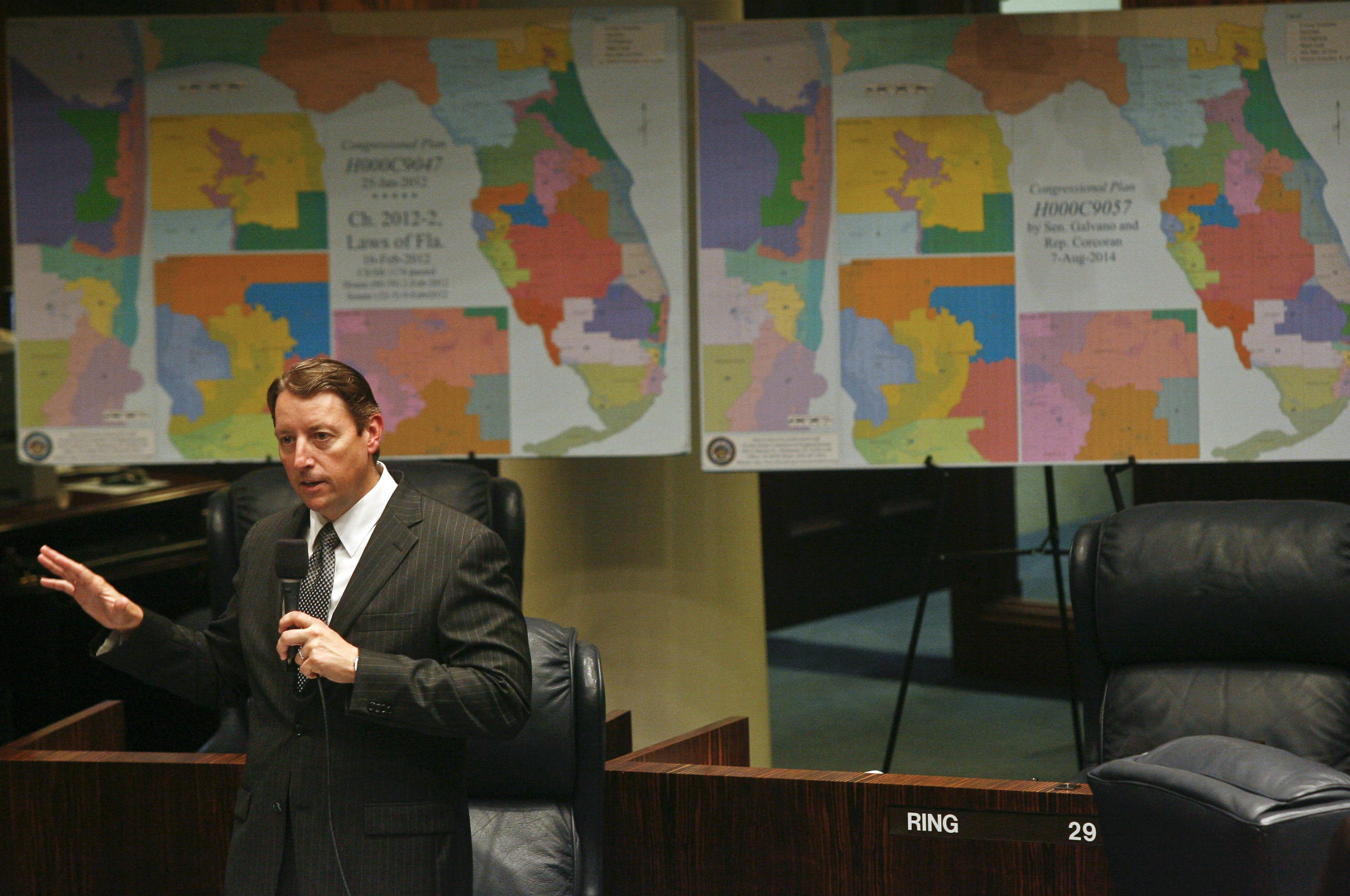
Florida has more registered Democrats than Republicans, but the balance of power in government doesn’t even come close to reflecting that.
Despite a 2010 constitutional amendment aimed at preventing political gerrymandering, Republicans dominate Florida politics. Democrats only hold 41 of 120 state House seats, 15 of 40 Senate seats and are outnumbered in in the U.S. House 16-11.
While it would be easy to say Republicans built their power because they draw the political boundaries for Congress and the Legislature, it’s not as simple as that. Yes, observers note, it has contributed to the lopsided political numbers in a state where presidential elections are often seen as a tossup. But they point out Republicans are at this point just better at raising money, recruiting candidates and winning races in districts that should be more competitive.
The Associated Press analyzed all 435 U.S. House races and about 4,700 state House and Assembly elections last year using a statistical method of calculating partisan advantage designed to detect potential gerrymandering. Florida was found to be one of the states with the largest Republican tilts in the state House. While it also showed Florida Republicans’ advantage in Congress was slightly more than should’ve been expected, it wasn’t to the point that clearly indicated gerrymandering.
The analysis examined the share of votes cast for Republican and Democratic candidates in each district and projected the expected number of seats each party would gain if districts were drawn so that neither party had an overall advantage. In Florida, Republicans had about 11 more seats in the state House than would be expected, one of the largest margins in the country.
Political maps are redrawn every 10 years after a new U.S. Census. Republicans helped gain dominance in Florida by controlling that process in 2002. Democrats controlled it in 1992 when they commanded the Legislature. Then Republicans flipped enough seats to take control by the time Republican Gov. Jeb Bush was elected in 1998.
“Republicans really put their foot on the gas when Bush got elected,” said Steve Schale, a Democratic political consultant.
The state House went from a 71-49 Democratic majority in 1994 to an 81-39 Republican majority after the 2002 election when districts were redrawn by Republican lawmakers. Schale said Republicans drew maps with highly concentrated Democratic districts so that they could create more Republican-strong districts that weren’t as concentrated.
As a result, Schale said, districts seen as competitive still have a slight Republican edge: “Even the places that are competitive aren’t truly like jump balls.”
Republicans acknowledge the 2002 rewrite favored their party.
Former Republican state Rep. Jeff Kottkamp sat on the House committee that redrew House maps. Kottkamp, who later served as lieutenant governor, said lawyers warned lawmakers that there were still rules that had to be followed. “You knew that the district had to be as compact as possible, contiguous. You tried to keep communities of interest all together. It just wasn’t always possible,” he said.
But he said every legislator tried to push for districts that increased their chances for re-election.
“Obviously if you’re the party in power and your members wanted to draw districts that helped themselves get elected, to a certain extent that’s naturally going to benefit the majority,” Kottkamp noted.
The 2010 “fair districts” constitutional amendment was aimed at preventing that practice. It requires lawmakers to draw maps that don’t benefit incumbents or political parties and to try to keep communities from being divided for political purposes.
Those behind the amendment successfully sued to have U.S. House and state Senate maps redrawn because they didn’t meet constitutional muster, but state House maps went unchallenged.
So, if the maps are fair, why do Republicans still dominate the state House? University of Florida political science professor Dan Smith said Republicans are better at fielding candidates and running campaigns — particularly in about 30 truly competitive districts.
“Republicans have done a good job of targeting those areas and getting good candidates and putting a lot of money into marginal districts, which they tend to win,” he said.
Likewise, he said state Senate maps are drawn fairly, but Democrats underperform in districts they should win.
Part of the problem with Democrats is institutional, said Schale. He said the party has no discipline and doesn’t recruit candidates as aggressively as it should.
“Too often we’ve settled for the first person who raised their hand, and that was not always the best option,” Schale said.
Republished with permission of The Associated Press.



